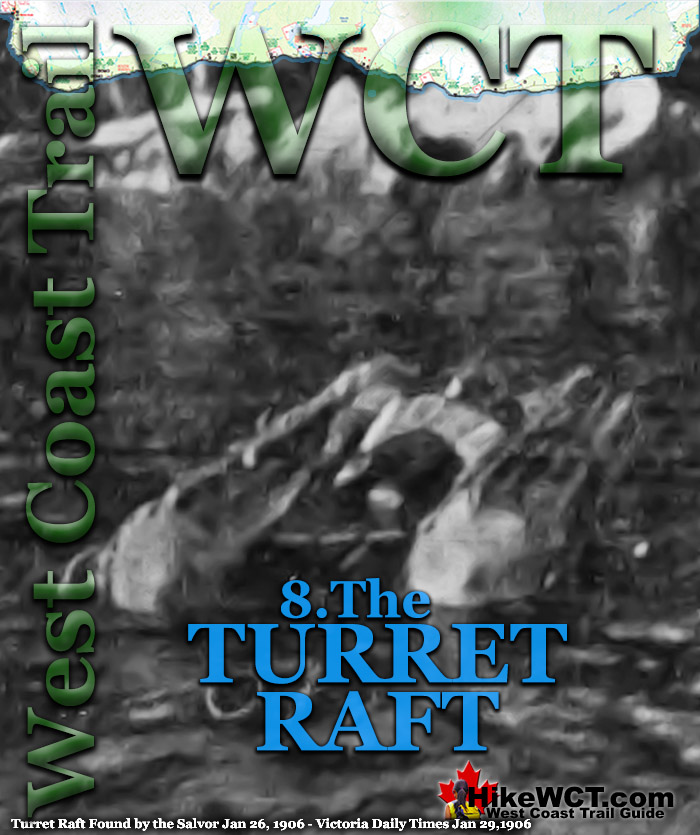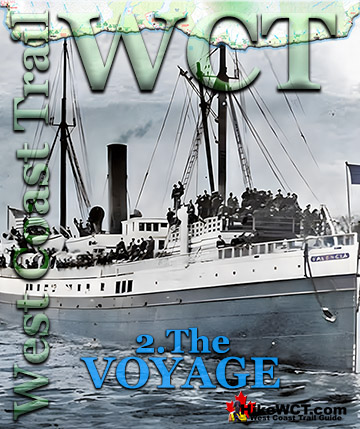![]() When the survivors on the second raft were rescued by the Topeka just three hours into their ordeal and so close to death that they could barely stand, one of them asked about the first raft. It was then first discovered by the outside world that another raft was still out there. And more poignantly, the Topeka Raft survivors that barely escaped death after five hours, learned that the first raft was still in that hell.
When the survivors on the second raft were rescued by the Topeka just three hours into their ordeal and so close to death that they could barely stand, one of them asked about the first raft. It was then first discovered by the outside world that another raft was still out there. And more poignantly, the Topeka Raft survivors that barely escaped death after five hours, learned that the first raft was still in that hell.
The Valencia Shipwreck
![]() 1. The Valencia
1. The Valencia ![]() 2. The Voyage
2. The Voyage ![]() 3. The Boats
3. The Boats ![]() 4. The McCarthy Boat
4. The McCarthy Boat ![]() 5. The Bunker Party
5. The Bunker Party ![]() 6. On the Valencia
6. On the Valencia ![]() 7. The Rafts
7. The Rafts ![]() 8. The Turret Raft
8. The Turret Raft ![]() 9. The Rescue Ships
9. The Rescue Ships ![]() 10. The Aftermath
10. The Aftermath ![]() 11. The Survivors
11. The Survivors ![]() 12. The Lost
12. The Lost
The West Coast Trail
![]() Prologue
Prologue ![]() 1: The West Coast Trail
1: The West Coast Trail ![]() 2: When to Hike & Fees
2: When to Hike & Fees ![]() 3: Trailheads
3: Trailheads ![]() 4: Getting There
4: Getting There ![]() 5: Considerations
5: Considerations ![]() 6: Campsites
6: Campsites ![]() 7: Shipwrecks
7: Shipwrecks ![]() 8: Routes
8: Routes ![]() 9: Sights & Highlights
9: Sights & Highlights
10am Wed 24th Jan: Departure
The first raft which left with only ten men at about 20 minutes before the Topeka Raft, probably around 10am. In charge of the raft was third assistant engineer Robert Nelson. Also on board were, chief cook Sam Hancock, waiter Frank Connors, fireman Max Stensler, fireman George Long, waiter John Wallace, passenger Adam Rolph, passenger W. Wilson, and two passengers on leave from the US Navy, Harry Gregory and another man name unknown. This raft, which could hold up to 18 people, departed with only 10 on board as everyone else was afraid to get on and many expected rescue to come quickly now that ships had arrived in the distance. Not only was there hope for rescue, but the difficulty of actually getting on one of the rafts deterred all but these ten men. The rafts had to be kept away from the side of the Valencia in order to keep it from slamming into it. To get on the raft you had to jump from the ship into the freezing ocean surging in and out and crashing all around. If you do get on a raft you will be freezing cold, soaking wet and constantly hit by waves coming over the sides. One man who got on the first raft and survived to tell about it was Frank Connors. He dove into the water from the maintopmast to try to catch it and smashed his face on something underwater. When he surfaced he was pulled onto the raft bleeding from his nose and mouth. The raft managed to clear the crashing surf, though waves constantly crashed over the sides and kept the men partly submerged, wet and cold. Cornelius Allison who was on the second raft recalled later the terrible conditions they had to endure. “It was terrible on the raft, the water was awfully cold. Our limbs became so benumbed that we could not even move them sufficiently to keep ourselves warm. I thought all would die of exposure. Huge seas came tumbling clean over, burying us beneath them until all suffered from swallowing water while trying to breathe."
Struggle to Reach the Queen
Pulling on the oars they focussed on the Queen in the distance which was drifting back and forth. Anyone not with an oar made frantic efforts to catch the attention of the ship. As they rose and fell in the giant swells there would be frantic shouting and waving in the few seconds that the distant ship appeared and disappeared from view. Frank Lehn had watched from the Valencia as the raft departed, “It was a struggle through the breakers, but they finally made it, and disappeared in the distance, swept up the coast by the wind and sea.”
Valencia's Life Rafts
This is a photo of the first raft launched from the Valencia on January 24th. It was later recovered and brought back to Seattle and examined by inspectors investigating the Valencia disaster. Valencia's second life raft was lost after the survivors were picked up by the Topeka and the Topeka rushed to search for the first raft. The two rafts would likely have been very similar, though the first raft, shown here, was probably larger than the second raft. This raft was tested in Seattle and they were able to get 22 men on it, however they found that even with 18 it was, "seriously crowded". Notice how little protection from the ocean and ocean waves it provided. Rafts were merely designed to float and resist flipping over. The pontoons were filled with tule reeds. Pronounced too-lee, they are, or were common plants growing in California wetlands. The reeds are a couple centimetres in diameter, two or three metres long and very buoyant. So buoyant that they can tied together in long bunches and fashioned into very functional canoes. 315 of the Valencia's 368 life vests were filled with tule. Many Valencia survivors reported the tule vests as useless once they were waterlogged, however investigators tested some later and determined that they maintain some buoyancy even after 17 hours. They did become waterlogged, and tests showed some vests absorbed close to 10 pounds of water after a few hours in the water.
Valencia's First Liferaft, the Turret Raft
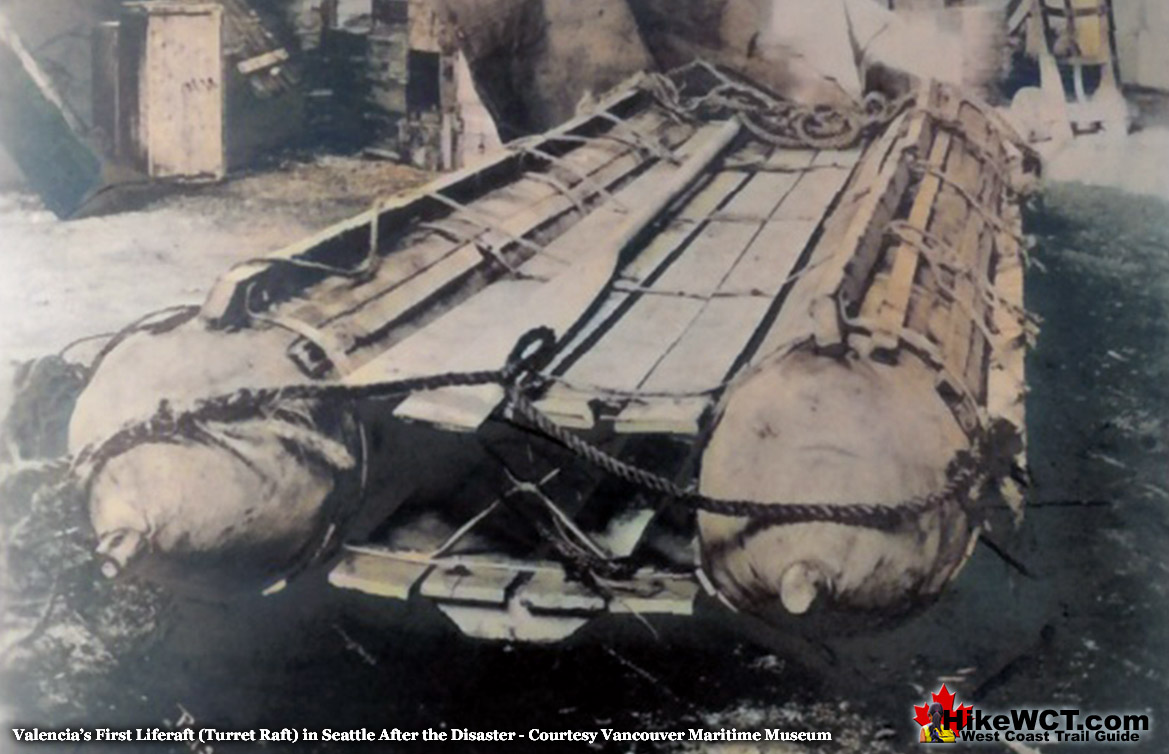
11am Wed 24th Jan: Struggling Toward the Queen
An hour passed as they rowed as best they could toward the Queen, however the current relentlessly dragged them up the coast, away from the Queen. The huge ocean swells and bad weather made them practically invisible to nearby ships even if they were looking for them. Which, incredibly, by about 11am they were not. The Queen had been ordered back to Victoria and was steaming into the distance. The two smaller vessels the Salvor and the Czar, afraid to approach the Valencia as they feared wrecking themselves, departed to Bamfield to send a rescue party by land. Another vessel, the City of Topeka was to relieve the Queen and stay in the vicinity of the Valencia, however a miscommunication caused the Topeka to not find the Valencia.
11am-3pm Wed 24th Jan: Cape Beale Lighthouse
With the hope of being rescued by a ship gone, they were now being pulled up the coast by the powerful current. They helplessly drifted into the abyss, soaked and freezing. Soon they spotted Cape Beale Lighthouse in the distance getting closer as they drifted towards it. As they got closer, they just had to row towards the rocky cliffs along the shore below the lighthouse and they would be saved. They steered toward the shore and pulled on the oars, but the current was too powerful and they drifted past.
4pm Wed 24th Jan: First Man Dies of Exposure
The time was now about 4pm, they had been on the raft for six hours and were close to succumbing to the cold. Around this time the US navy man with the unknown name died of exposure. Reporter, R.P. Dunn, who interviewed Hancock hours after being rescued, wrote in the Victoria Daily Times, “So poignant was the disappointment that one of the passengers, who was of more delicate appearance than the others, and whose vitality was unequal to the mental and physical strain gave up the unequal fight and in a few minutes passed away. The others, knowing that every unnecessary pound of weight on their slight craft reduced their chance of surviving, dropped his body overboard.” Little is known about this man except that he was in the navy and probably serving on the same ship as fellow passenger Harry Gregory. What is known for sure is that they were close friends and Gregory was opposed to having his friend thrown overboard. He particularly resented Hancock for the incident, which suggests that Hancock pushed the man overboard.
5pm Wed 24th Jan: Adam Rolph Jumps Overboard and Drowns
Still being dragged up the coast by the current and their last hope, Cape Beale Lighthouse fading in the distance, the nine men barely alive on the raft gave up hope. They gave up on rowing and having no idea where they were, they floated aimlessly north. Soon another passenger Adam Rolph, driven mad from the helpless agony of drifting nowhere, jumped overboard and drowned. From his interview with Hancock, R.P. Dunn wrote about what drove Adam Rolph to jump from the raft. “Who can place himself in such a position and imagine the dreadful strain upon the castaways in their struggle for life, mental and physical, and not acknowledge that the outcome was most natural? Those not inured to the hardships of the sea either sank benumbed with the extreme cold or else became so frenzied with despair as to reach a condition bordering upon insanity. The latter was the fate of a fashionably dressed passenger. He was best with all kinds of illusions. Finally, he swore that there was an island a few feet off and that he could swim the distance easily. Suiting the action to the word he precipitated himself into the sea and was never seen again. Probably the body reported to have been found on an island in the neighbourhood will, when identified, prove to be that poor fellow’s remains.” Adam Rolph was a passenger on the Valencia heading back to his wife and five children in New Westminster where he lived for twenty years. The Daily Colonist reported that Rolph had recently resigned his position as bookkeeper at the St. Mungo Cannery, Fraser River, and went to San Francisco to engage in a business venture there. Mrs. Rolph received a letter from him that his plans had miscarried and that he was returning on the Valencia. Frank Connors, also on the raft with Rolph, later recalled, “I saw him dashed against the rocks, we were unable to help him.” Rolph's body was found a couple days later, washed ashore not far from where he jumped from the raft.
5pm-6pm Wed 24th Jan: W. Wilson Jumps Overboard and Drowns
Probably around 5 or 6pm they drifted into Barkley Sound and the scattering of islands of the Broken Group. Distant islands appeared around them, though they had given up hope and had no strength left to row. Even if they could muster the strength to row, they felt hopeless against the relentless current. At this point the eight remaining survivors on the raft had endured about eight hours of agony, soaking wet with freezing seawater, W. Wilson leaped into the sea and swam toward one of the far away islands. He drowned in the attempt, leaving only seven desperate men on the raft.
11pm Wed 24th Jan: Land on Turret Island
The current dragged them as they watched helplessly, now in darkness, as distant shadows of islands passed them on either side. There was suddenly renewed hope when they found themselves drifting toward an island. Of the seven men on the raft, three were so close to death they barely moved. The other four, Sam Hancock, Max Stensler, George Long and Frank Connors manned the oars and struggled closer and closer. Probably between 11pm and midnight, Wednesday, January 24th, after fourteen hours of hell they landed on Turret Island. The four men managed to pull the raft above the high water mark and collapsed to the ground exhausted. The other three men, third assistant engineer Robert Nelson, waiter John Wallace and passenger Harry Gregory barely moved. Gregory and Nelson were nearly dead from exposure and Wallace was probably already dead.
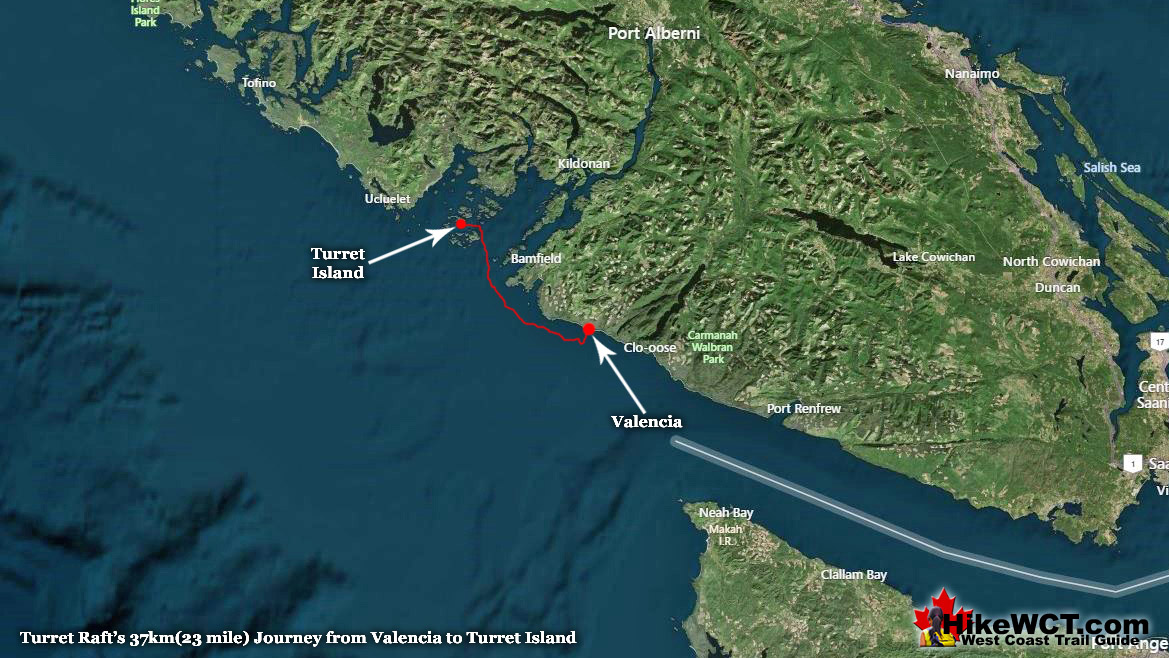
12am-5am Thurs 25th Jan: Gregory Attacks Hancock
At some point during the night, Harry Gregory sprang to life apparently possessed with the idea that Hancock was “a wild dog and good to eat.” Gregory jumped on the sleeping Hancock and began choking him. Hancock and the others woke and overpowered Gregory who had lost his mind. Apparently the first man on the raft to die, the unknown navy man that the others pushed into the sea was a close friend of Harry Gregory. The others would later speculate that this was the cause of the hate directed at Hancock. After the attack, Gregory shrank back and collapsed. He never moved again.
5am Thurs 25th Jan: Search for Help
In the morning at about 5am, with daylight approaching, Hancock, Stensler, Long and Connors woke. They had no idea where they were, but finally on solid ground they could walk in search for help. They were sure that John Wallace was dead, but believed that Harry Gregory and Robert Nelson were still be alive, though barely. They hoped to find help and return to the raft for Gregory and Nelson when they do. Wandering into the forest they soon lost their way back to the raft and focussed on just moving forward.
9am Thurs 25th Jan: Connors Splits from Group
After a few hours wandering through the forest, they decided it was best to walk along the shoreline as close as possible. It was now about 9am, 23 hours since they left the Valencia, and it seems Frank Connors was beginning to lose his mind. He insisted that in the other direction they would find Cape Beale Lighthouse. The others ridiculed this idea and Connors set off on his own into the forest along. Hancock, Stensler and Long continued along the coast while Connors headed inland and disappeared. Along one stretch of beach the trio found oranges that must have drifted in from the Valencia. The greedily ate them and then searched around for anything else edible. They found some sort of vegetation along the forest and tried digging for clams, but found none.
12pm Thurs 25th Jan: Hancock, Stensler and Long Found
At about noon on Thursday January 25th January Sam Hancock, Max Stensler and George Long found by the sister of Charlie Ross, a first nations policeman. They were taken to a small settlement on the island and a few hours later, at about 9pm they were picked up by the Shamrock, a small steamer, and taken to Toquart, the nearest settlement along Ucluelet Arm. They arrived at Toquart at 10:40pm and were cared for at the house of Government Lineman H.J. Helliers.
9am Fri 26th Jan: Survivors Report Connors Still On the Island
Friday morning, January 26th the Salvor in Bamfield received news that survivors had been found on Turret Island. The Salvor rushes to Toquart and picks up the three Turret Raft survivors. Sam Hancock, Max Stensler and George Long were taken aboard the Salvor at about 9am and the Salvor learns that "waiter Connors" is possibly still alive somewhere on Turret Island. "Waiter Connors", is mistakenly reported in many newspapers as "Walter Connors", which is why you see this incorrect name frequently. The Salvor then rushed from Toquart to Turret Island to search for Frank Connors.
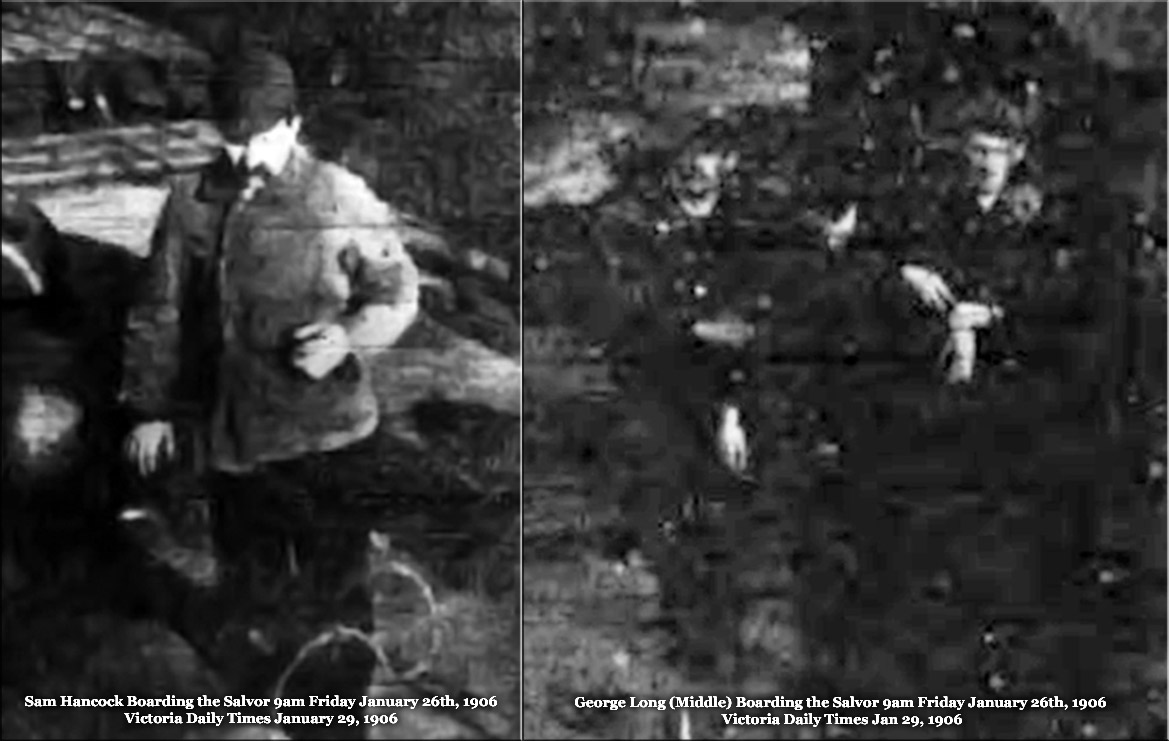
11am Fri 26th Jan: Salvor Begins Turret Island Search
At about 11am Friday, 26th January the Salvor anchored off Turret Island to begin the search for Frank Connors and the life raft with Nelson, Gregory and Wallace with it and possibly still alive. They launched two boats to circle the island in either direction. One heading west and the other heading east.
1pm Fri 26th Jan: Raft Found With Three Dead
1pm Friday Jan 26th: Reporter, R.P. Dunn was on the westward heading boat and reported in the Victoria Daily Times the search and discovery of the life raft with with the dead bodies of Harry Gregory, Robert Nelson, and John Wallace. "The first two bays inspected disclosed nothing, but upon the third, lying almost upon its side and upon it huddled a number of limp figures, was the life raft. The bodies were huddled together. One of the men was on his back while the tense muscles of his face and his clenched fists showed how pluckily he had faced death to the last, and how grudgingly he had given up his hold on life. The second body was lying face downwards. The third(Nelson) was in its bare feet, which were swollen with the cold."
It was decided to tow the life raft with the bodies on it back to the Salvor, which R.P. Dunn recalls, "We went in carefully, owing to the strength of the surf, and upon instructions I jumped ashore, to me being allotted the gruesome task of attaching the painter so that it might be towed away to the ship. But the raft was lodged too firmly for that, and it was some time before we got it beyond the surf and to the vessel’s side. It was while on the way back to the vessel that the accompanying picture was obtained"
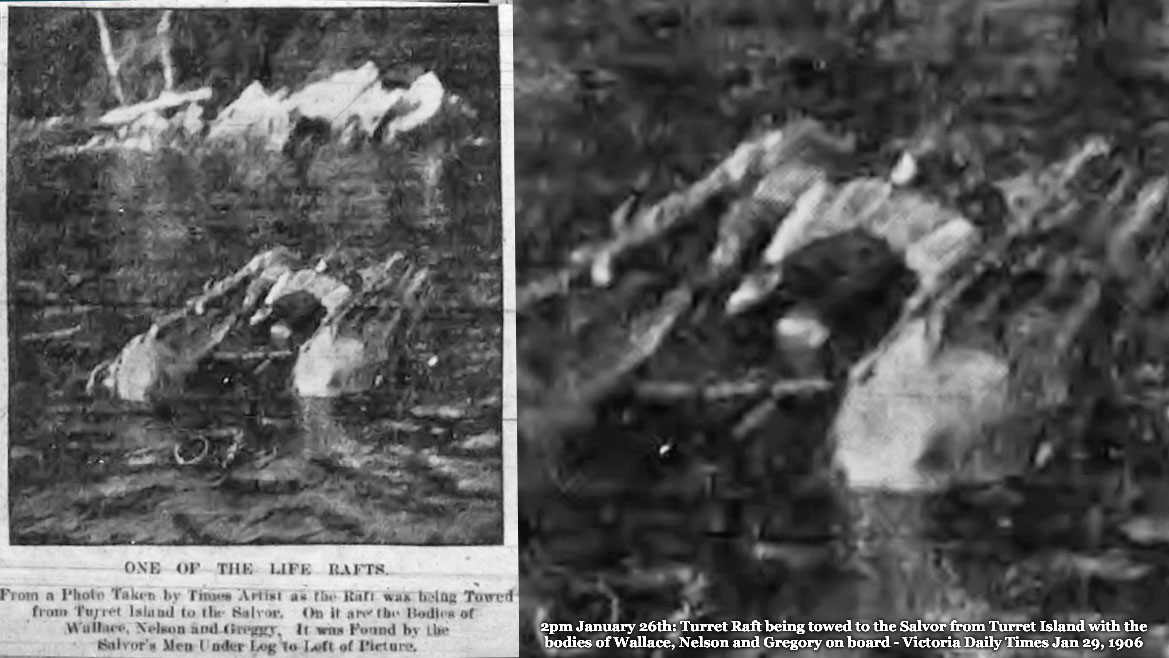
2pm Fri 26th Jan: Connors Found on Turret Island
2pm Friday Jan 26th: The boat that set off from the Salvor along the coast in an easterly direction found Frank Connors after about one mile laying on a log in the sun.
4pm Sat 27th Jan: Connors and Long Arrive in Victoria
4pm Saturday Jan 27th: The Salvor arrives in Victoria with Frank Connors and George Long. Sam Hancock and Max Stensler on their way to Seattle.
The Valencia Disaster Continued: 9. The Rescue Ships
Best West Coast Trail Sights & Highlights
The Valencia Disaster
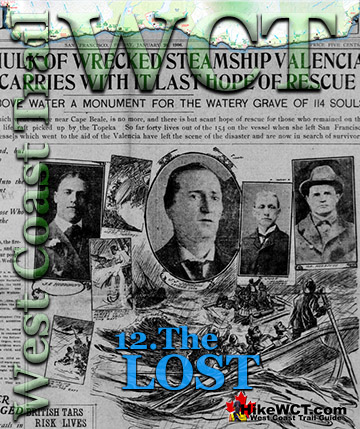
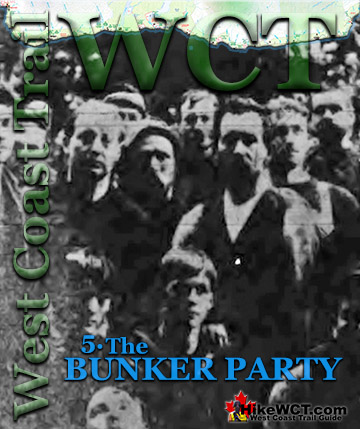
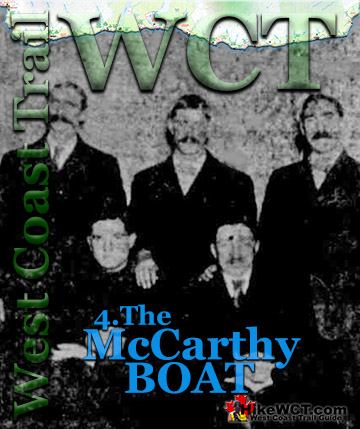
West Coast Trail A to Z
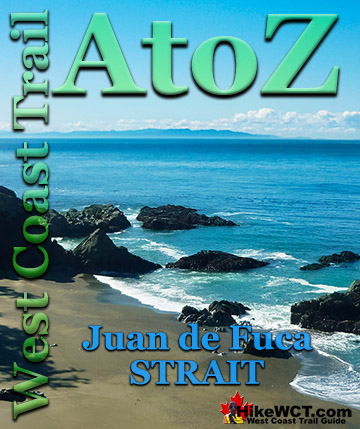
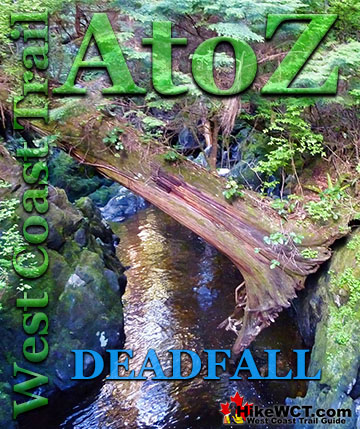

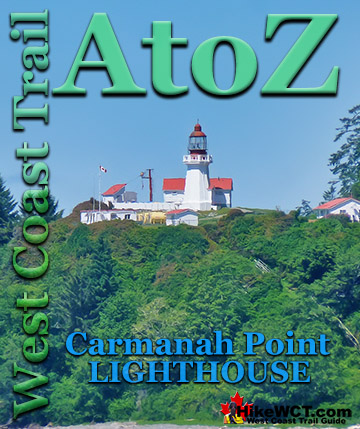
The West Coast Trail by Day
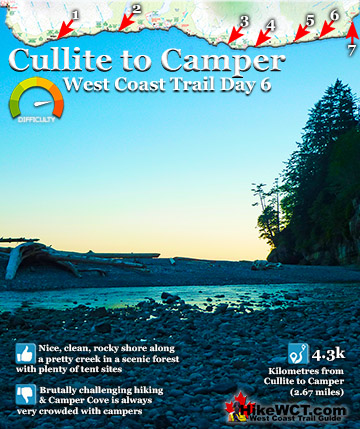
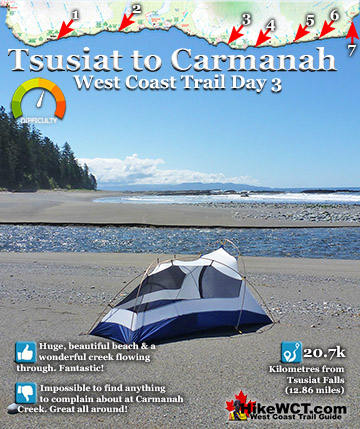
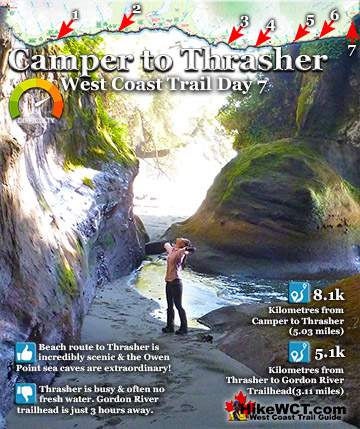
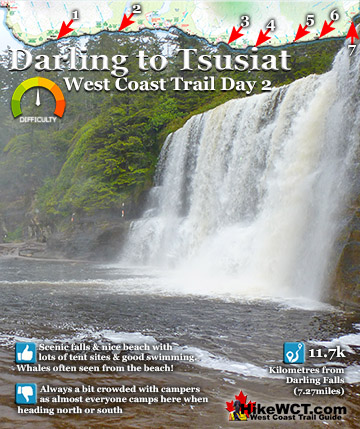
Explore BC Hiking Destinations!
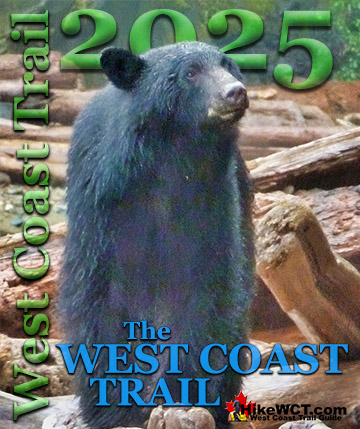
The West Coast Trail

Victoria Hiking Trails

Clayoquot Hiking Trails

Whistler Hiking Trails
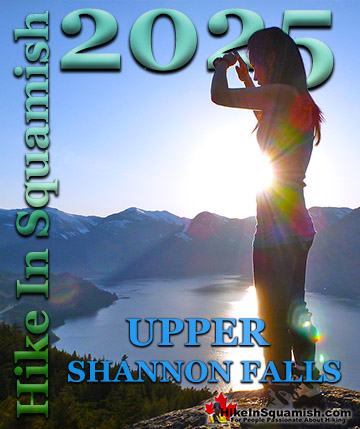
Squamish Hiking Trails

Vancouver Hiking Trails

